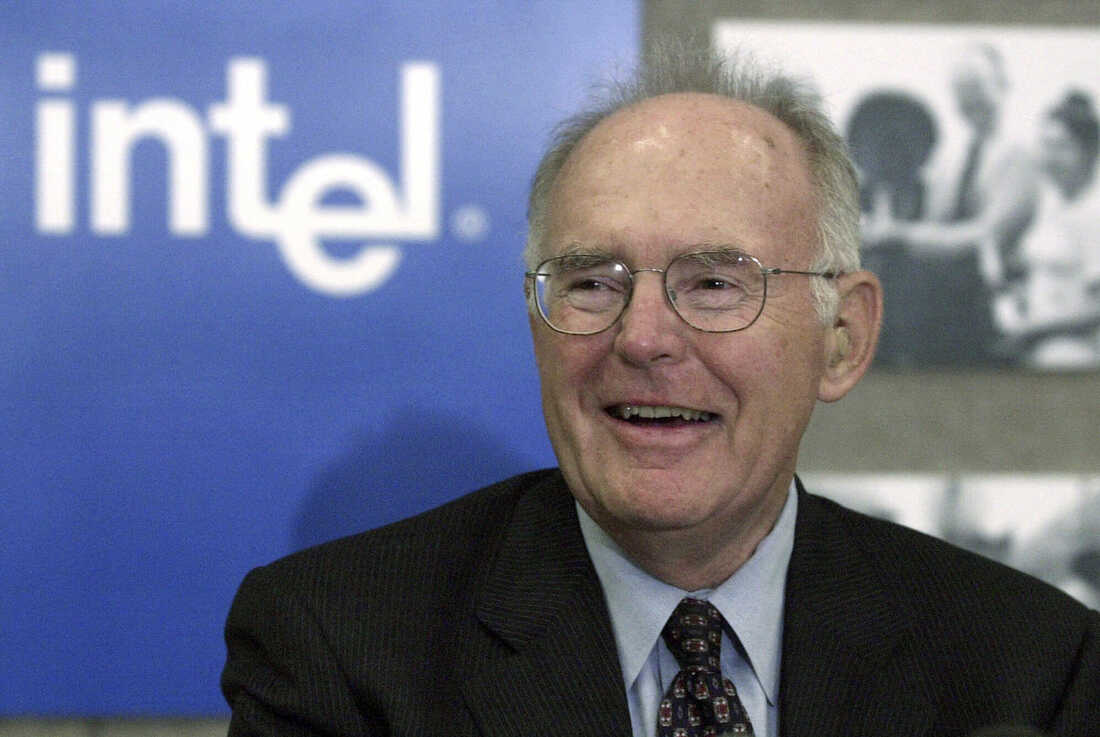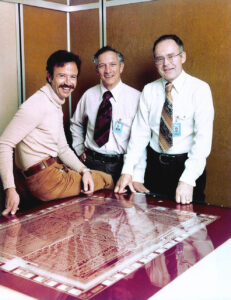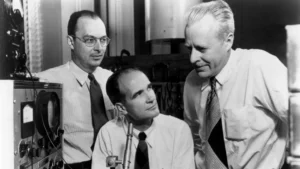Gordon Moore: Architect of Innovation and Intel’s Ascension
Gordon Moore (January 3, 1929 – March 24, 2023) was an American businessman, engineer, and the co-founder and emeritus chairman of Intel Corporation. Moreover, he proposed Moore’s law, which makes the observation that the number of transistors in an integrated circuit (IC) doubles about every two years.
Early Years and Pioneering Beginnings
Gordon Moore journey to creating the most important company on the face of the earth began with his pioneering spirit and insatiable curiosity. Furthermore, Moore’s educational background was instrumental in shaping his future. Having earned a Ph.D. in chemistry and a minor in physics from the California Institute of Technology (Caltech), he laid the foundation for his contributions to semiconductor technology.
Life at Fairchild and the Traitorous Eight
Gorden Moore career took a significant turn when he joined the pioneering semiconductor company Fairchild Semiconductor. As Director of R&D, he played a key role in establishing Fairchild as a leader in the semiconductor industry. However, Moore and a group of his colleagues, who later became known as the “Traitorous Eight,” grew disillusioned with the direction of the company and its management.
Venturing into the Unknown
Frustrated with the lack of support for their innovative ideas at Fairchild, Moore and his colleagues decided to strike out on their own. This decision marked a pivotal moment in Moore’s journey, as it led to the creation of Intel Corporation. The Traitorous Eight’s departure from Fairchild was a bold move that demonstrated Moore’s determination to pursue his vision of technological advancement and innovation.
Read More ::Follow us on Linkedin for all major updates
In 1968, Gordon Moore, along with his fellow visionary Robert Noyce, co-founded Intel Corporation. Operating from a modest office space, their endeavor was driven by Moore’s determination to transform cutting-edge semiconductor technology into a thriving commercial enterprise. Consequently, this marked the birth of a company that would go on to reshape the world of computing and technology.
Moore’s Law: A Visionary Prediction
In 1965, Gordon Moore made a bold prediction that would become the cornerstone of modern technology: the number of transistors on a microchip would double approximately every two years. This audacious insight, later known as “Moore’s Law,” was initially an empirical observation. However, it became a guiding principle for the semiconductor industry, catalyzing exponential advancements in computing power and miniaturization.
Lack of fear of failure is an important part of it. People are not willing to try things. They figure if they don’t make it, they can do something else.
~Gordon Moore
Learning from Missteps and Setbacks
Ironically, Moore’s prediction became a self-fulfilling prophecy. Consequently, as companies like Intel rallied to keep up with Moore’s Law, they propelled the development of increasingly powerful and efficient microchips. This phenomenon, in turn, led to an unprecedented acceleration of technological progress, demonstrating the profound impact one visionary’s insight could have on shaping the future.
“Gordon’s genius was that he could separate the wheat from the chaff, while fostering an environment where people felt empowered to voice their opinions.”
~Andy Grove
Creating a Culture of Innovation
Gordon Moore’s leadership at Intel was characterized by his emphasis on innovation and collaboration. He fostered an environment where ideas flowed freely and where pushing the boundaries of what was possible was encouraged. Moore’s belief in innovation as the driving force behind success laid the foundation for Intel’s transformative impact on the technology landscape.
Microprocessors: A Revolution Unleashed
One of Moore’s most significant contributions was the development of the microprocessor, a groundbreaking technology that revolutionized computing. This tiny chip, integrating the functions of an entire computer’s central processing unit onto a single piece of silicon, paved the way for modern computing devices. Moore’s dedication to pushing technological limits resulted in a seismic shift that changed the way people interacted with computers.
Also Read: Who invented Transistor, Really??
Failures
Gordon Moore had many successes in his career, but he also had some failures. One of his most notable failures was the iAPX432 microprocessor. The iAPX432 was a very ambitious project that aimed to create a new type of microprocessor that was much more powerful than anything that had come before it. However, the project was very complex and expensive, and it ultimately failed to meet expectations. The iAPX432 was discontinued in 1986 after only five years on the market.
Another failure of Gordon Moore’s was the company he co-founded, Shockley Semiconductor. Shockley Semiconductor was a pioneer in the semiconductor industry, but it was also a very difficult place to work. Moore and several other engineers left Shockley Semiconductor in 1957.
Inspiring Future Generations
Gordon Moore’s journey from a curious scientist to a co-founder of Intel and a philanthropic leader is an inspiring testament to the potential of visionary thinking. His legacy continues to inspire innovators, scientists, and entrepreneurs to push boundaries, embrace challenges, and create a better future. Gordon Moore’s story, shaped by his education, experiences at Fairchild, and his willingness to challenge the status quo, serves as a reminder that a single individual’s vision and determination, combined with the ability to learn from failures, can shape industries, transform lives, and leave an indelible mark on the face of the earth.



